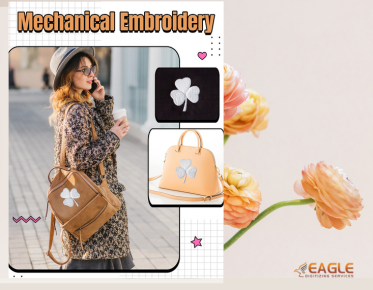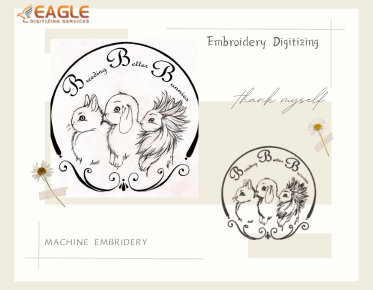How to Prepare Artwork for Embroidery Digitizing
Embroidery digitizing is a crucial step in transforming your artwork into a format that can be read by embroidery machines. This process involves converting your design into a digital file that guides the machine on how to stitch the design onto fabric. To ensure a smooth digitizing process, it is essential to prepare your artwork correctly. In this guide, we will explore the steps necessary to prepare artwork for embroidery digitizing, ensuring your designs are ready for the next stage of production. For more detailed insights, you can explore resources on embroidery digitizing【4:1†source】.
Understanding the Basics of Embroidery Digitizing
Before diving into the preparation of artwork, it's important to understand what embroidery digitizing entails. Essentially, it is the process of converting a graphic design into a stitch file that an embroidery machine can read. This file dictates the path of the needle, the sequence of colors, and the type of stitches to be used. The quality of the digitized file directly impacts the final embroidered product, making it crucial to start with a well-prepared artwork.
Choosing the Right Artwork
The first step in preparing artwork for embroidery digitizing is selecting the right design. Not all designs are suitable for embroidery; intricate details and gradients can be challenging to replicate with thread. It's best to choose artwork with bold lines and clear shapes. If your design includes text, ensure that the font is legible and not too small, as tiny letters can be difficult to embroider accurately.
Preparing the Artwork File
Once you have chosen your design, the next step is to prepare the artwork file. This involves cleaning up the design to remove any unnecessary details that might complicate the digitizing process. Use graphic design software to adjust the contrast and brightness, ensuring that the lines are crisp and clear. The artwork should be saved in a high-resolution format, such as a vector file, to maintain quality during the digitizing process.
Understanding Stitch Types and Their Impact
Different stitch types can dramatically affect the appearance of the final embroidered product. Common stitch types include satin, fill, and running stitches, each serving a different purpose. Understanding how these stitches work can help you anticipate how your design will look once embroidered. For instance, satin stitches are ideal for borders and text, while fill stitches are used for larger areas. If you're new to embroidery, consider consulting with a professional or using embroidery digitizing software to experiment with different stitch types【4:0†source】.
Color Considerations
Color plays a significant role in embroidery, and it's important to choose thread colors that closely match your design. Keep in mind that the color of the fabric can also affect the appearance of the embroidery. When preparing your artwork, consider how the colors will contrast with the fabric. It's often helpful to create a color chart that matches your design with the available thread colors.
Size and Placement
The size of your design is another critical factor to consider. Embroidery machines have limitations on the size of the design they can handle, so it's important to scale your artwork accordingly. Additionally, consider the placement of the design on the garment or fabric. Ensure that the design is centered and positioned correctly to avoid any issues during the embroidery process.
Testing and Adjustments
Before finalizing your artwork for digitizing, it's a good idea to test the design on a sample fabric. This allows you to see how the design translates into embroidery and make any necessary adjustments. Pay attention to the stitch density, color accuracy, and overall appearance. Making adjustments at this stage can save time and resources in the long run.
Working with a Professional Digitizer
If you're not confident in your ability to prepare artwork for embroidery digitizing, consider working with a professional digitizer. They have the expertise and tools necessary to convert your design into a high-quality stitch file. A professional can also provide valuable insights into improving your design for embroidery. For those interested in professional services, machine embroidery digitizing services are available to assist with the process【4:0†source】.
Final Thoughts
Preparing artwork for embroidery digitizing is a meticulous process that requires attention to detail and an understanding of embroidery techniques. By following the steps outlined in this guide, you can ensure that your designs are ready for digitizing and will result in high-quality embroidered products. As the industry continues to evolve, staying informed about the latest trends and technologies in embroidery digitizing can enhance your skills and open up new possibilities for your designs. Eagle Digitizing excels in providing professional embroidery digitizing services, ensuring every design is crafted with unmatched precision.



